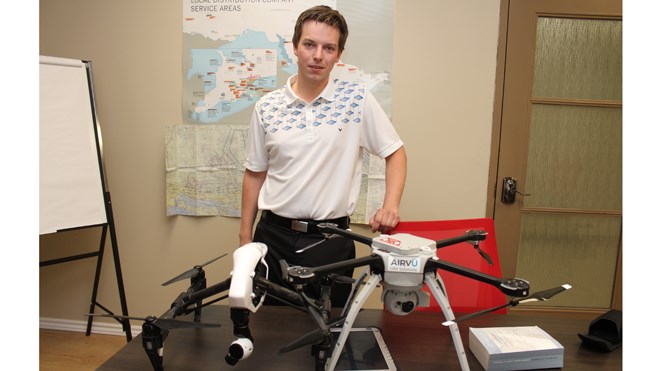Sudbury's handful of commercial drone operators worry it could just be a matter of time before an enthusiast who doesn't follow Transport Canada's safety regulations seriously injures themselves or someone else.
“As a pilot, I'm worried about being in the same airspace as UAVs (unmanned aerial vehicles),” said Stephen Costello, the president of Sudbury's Costello Utility Consultants and AirVU.
Costello's engineering firm started using drones last year to monitor much of the infrastructure that makes up Ontario's electrical grid.
With a $160,000 drone called the Aeryon SkyRanger, his pilots are able to take detailed photographs of high-voltage electrical towers to verify their structural integrity without putting themselves in harm's way.
AirVU also creates detailed 3D maps with its drones that can be used to create engineering models.
But while Costello said his company applies for special flight operation certificates through Transport Canada in order to operate its drones, and does everything by the book, many recreational drone pilots simply ignore those rules.
Transport Canada, which regulates Canada's airspace, has outlined a number of regulations every drone pilot must follow (unless they apply for a special exemption).
Drones cannot fly at an altitude higher than 90 metres, or around 300 feet, for example, to avoid potentially disastrous collisions with other aircraft.
Drone operators are also forbidden to operate their machines within nine kilometres of an airport or helipad, and must stay at least 150 metres away from people and buildings.
Transport Canada can fine individuals up to $5,000 and businesses up to $25,000 if they are caught breaking those rules.
If a person flies a drone near restricted airspace, such as an airport, they can also face possible jail time.
“For enthusiasts, it's really simple: you need to stay away from people, you need to stay away from air traffic and you need to stay away from vehicles,” Costello said.
He added that Sudbury's Bell Park should be off limits for any drone operators who don't get an exemption, although some have posted videos on YouTube of flights in the area.
“The hospital ... is a licensed aerodrome,” Costello said. “That means flying in Bell Park or the soccer park across the road — those are prohibited areas.”
John Hartman, president of Sudbury-based Pro Sky Video, which also has Transport Canada certification to operate drones for commercial purposes, said he is aware of some recreational drone pilots in Northern Ontario who openly flaunt Transport Canada's rules.
“Are they thinking they're infallible?” he said.
Hartman said there was recently a close call near Winnipeg where a drone came within 25 metres of colliding with a commercial aircraft around 900 metres above ground level.
Hartman said he is a proponent for drone manufacturers like DVI Aviation to restrict the capabilities for their commercially available drones so they cannot fly above 90 metres or escape the pilot's line of sight.
Even though Transport Canada admits its drone regulations are out of date, the federal department is still working on new rules.
Aaron McCrorie, Transport Canada's director general of civil aviation, said Transport Canada is planning to update its drone regulations within the next year.
“There have been too many close calls, and that's one of the big reasons why we want to update our regulatory framework,” he said.
One big change is that Transport Canada could require drone operators to register their machines and themselves with a government database.
There are also plans to place age limits on who can purchase a drone, and to create a permitting system that would be similar, albeit less stringent, to what is currently in place for traditional pilots.
The new rules would also end the distinction between drones used for commercial activities and those used for recreational activities, and would instead place more emphasis on the size of the machine and where it would be used.
A larger drone that would be flown near a populated area, for instance, would face more strict regulations than a small drone flown in a remote area.
“We're trying to treat UAVs like any other aircraft, McCrorie said.
